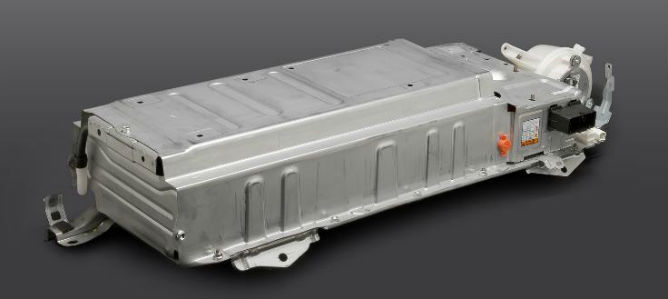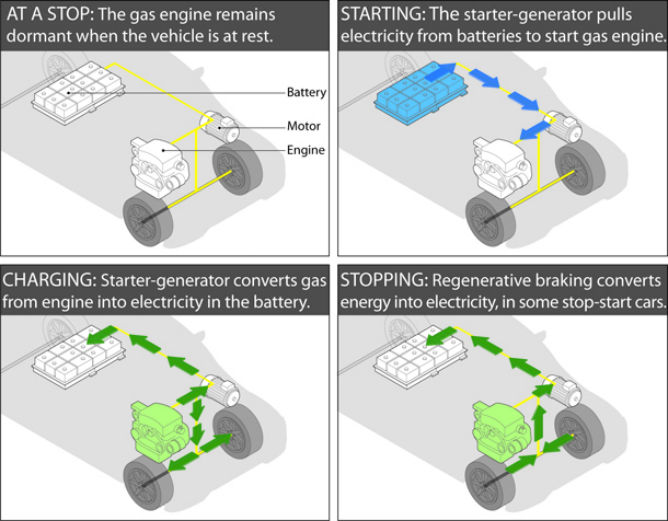Having researched and meditated on the world of automobile, I discovered that Hybrid vehicle is becoming dominant amidst automobiles. The essence of this is its newest technology, multi-tasking, flexibility etc.
A hybrid vehicle uses two or more distinct types of power, such as internal combustion engine to drive an electric generator that powers an electric motor, e.g. in diesel-electric trains using diesel engines to drive an electric generator that powers an electric motor, and submarines that use diesels when surfaced and batteries when submerged. Other means to store energy include pressurized fluid in hydraulic hybrids.
Prior to understanding of the types of power utilized by hybrid vehicles, Hybrids can basically be divided into three main types: These are:
Full hybrids, mild hybrids, and plug-in hybrids.
Then again, there exist variations, such as so-called “muscle hybrids” and “micro hybrids” – for which arguments could be made that these are sub-types.
In the U.S. the “two different power sources” hybrids rely upon are for now only gasoline and electricity, but in Europe there are some diesel-electric hybrids. It would be just as valid to consider other mixes, such as a natural gas plus electric, or what have you, but for our purposes, it’s gasoline and electricity.
HYBRID-ENABLING TECHNOLOGIES
Hybrids share an overlapping set of technologies to make their systems work. Their basic goal is to maximize the use of the electric portion of the drive-train because electric motors are more efficient and produce no emissions.
Hybrids have been called a “bridge” toward pure electric vehicles. In other words, they are a compromise, so another qualifier is they can be considered good, better, and best compromises.
All gas-electric hybrids utilize some size of battery pack and electric motor. Engineers have come up with various ways to keep the battery charged short of plugging the car in. An exception is – as you might have guessed – the plug-in hybrid which can partially recharge on the road, but needs to be plugged in because its battery is too large for the car to efficiently recharge it on the go.
An exception in turn here is the Porsche Panamers S E-Hybrid which is able to fully recharge while driving.

2010 TOYOTA PRIUS BATTERY
The smaller batteries in regular “full” or “mild” hybrids – or even purported “micro hybrids” – are replenished through a couple of ways.
One is by the motor/generator which alternately helps propel the car, or upon deceleration, generates power back to the pack. This is what “regenerative braking” involves. The motor essentially reverses and works to create energy when the car is slowing down. It thus converts kinetic energy and is an elegant solution.
Another way is by allowing the engine to turn the motor/generator in certain portions of the drive cycle where it can most efficiently do so.
Of course this would be impossible without fairly advanced computer controls which monitor these and a few other tricks.
Other tricks include “stop-start” technology, also known as “idle-off,” which shuts down the engine when the car comes to a stop, and these come in a variety of types.

Stop-Start Technology
In common to all, is releasing the brake lets the engine restart instantly – and it is engineered for this, so there’s no concern with lack of oil pressure or friction from frequent starts as there might be if you simply turned a regular car off, and started it with the key (or start button).
Another thing enabled by hybridization is reduction of the engine displacement and often number of cylinders. Because the electric motor shares the load, a gasoline engine can be optimally sized for fuel efficiency and clean burning.
Most full hybrids also incorporate the Atkinson Cycle. This shortens the intake and compression stroke of a four-cycle engine to increase efficiency at the expense of some horsepower and torque. Again, with the addition of electric motor to fill in the gaps, the driver does not perceive an under-powered vehicle.
Hybrids also tend to use an efficient variation of the automatic transmission called a continuously variable transmission (CVT). This changes the drive ratios more steadily allowing the engine to run in its most fuel-efficient rpm range. Some hybrids however may have a regular automatic transmission, such as those from Hyundai and Kia.
Source: Wikipedia
